A handcuff knot was traditionally created for use as handcuffs. Today, their use as handcuffs is rare because they’re not very secure. Today, they are more often used for restraining animals or role play. They are sometimes used in search and rescue as well. Boaters also use them to secure items to their boat railings.
Two knots similar to the handcuff knot include:
Follow the directions below to learn how to tie a handcuff knot.
What Is The Handcuff Knot?
A handcuff knot is also known as a fireman’s chair knot or a hobble knot.
The first mention of the handcuff knot occurs in The Ashley Book of Knots. The book says the knots were invented specifically for use as handcuffs.
Handcuff knots are not very helpful if you need to know how to tie someone up. Their original function was to act as handcuffs, but they don’t do the job well.
They don’t lock well and aren’t good at securing a person’s hands. Still, one or more overhand knots can be used to tie the two ends together for extra security.
What Is The History Of Handcuffs?
Handcuffs have been around for centuries. Our early ancestors used rope and leather strips to bind wrists.
The oldest mention of handcuffs comes from the Fourth-Century BC. Greek soldiers conquered Carthaginian armies. After doing so, they found many handcuffs in the backs of their wagons. At the time, handcuffs were mainly used on prisoners of war.
Handcuffs used to go by many different names:
- Swivel manacles
- Manacles
- Shackles
- Shackbolds
- Fetters
- Bracelets
- Irons
- Cuffs
It wasn’t until the Bronze Age that handcuffs with locks and keys were invented. During the mid-1800s, we began creating adjustable handcuffs with wrist bars. In 1912 came the invention of adjustable wrist bars. They allowed police to snap on handcuffs easily.
How To Tie A Handcuff Knot
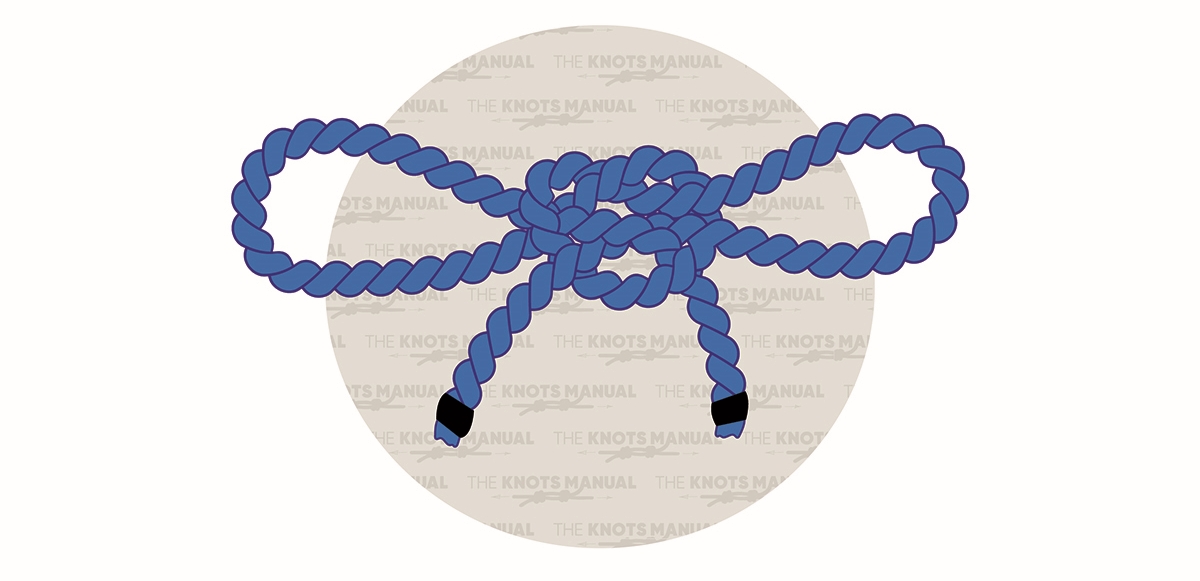
To tie a handcuff knot follow these four simple steps:
Step 1:
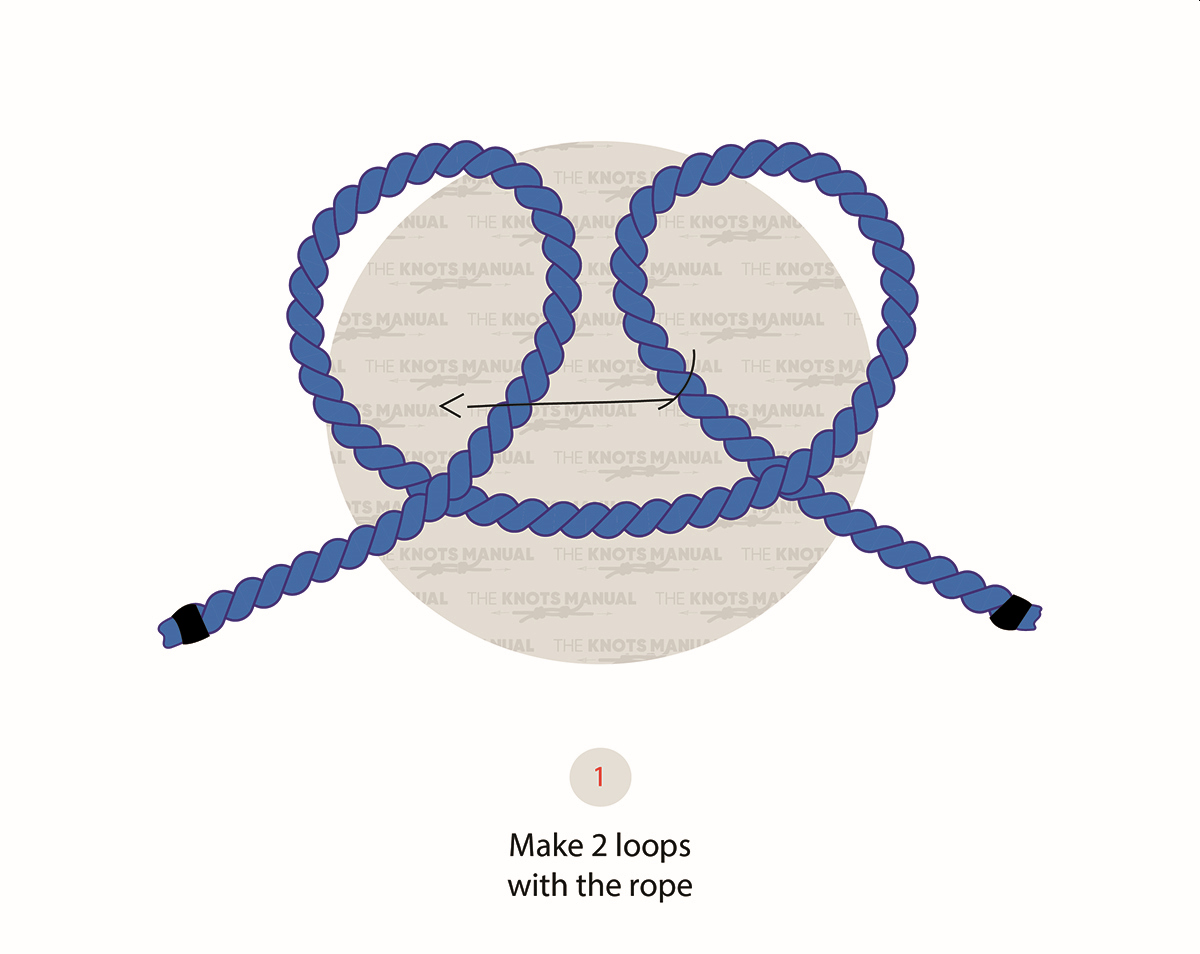
Create two loops in the standing part of the rope.
Step 2:
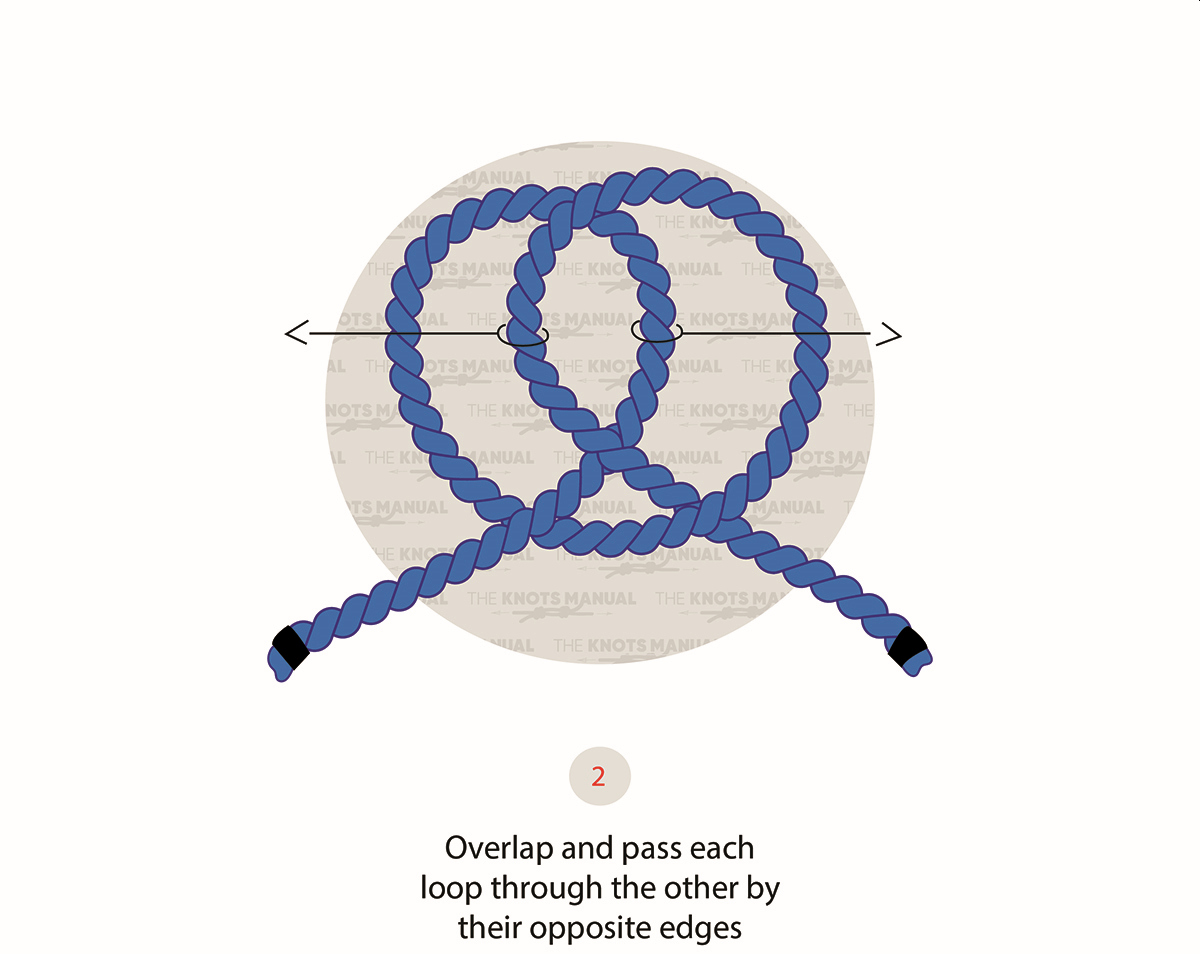
Overlap the loops and pass them through each other by their opposite edges.
Step 3:
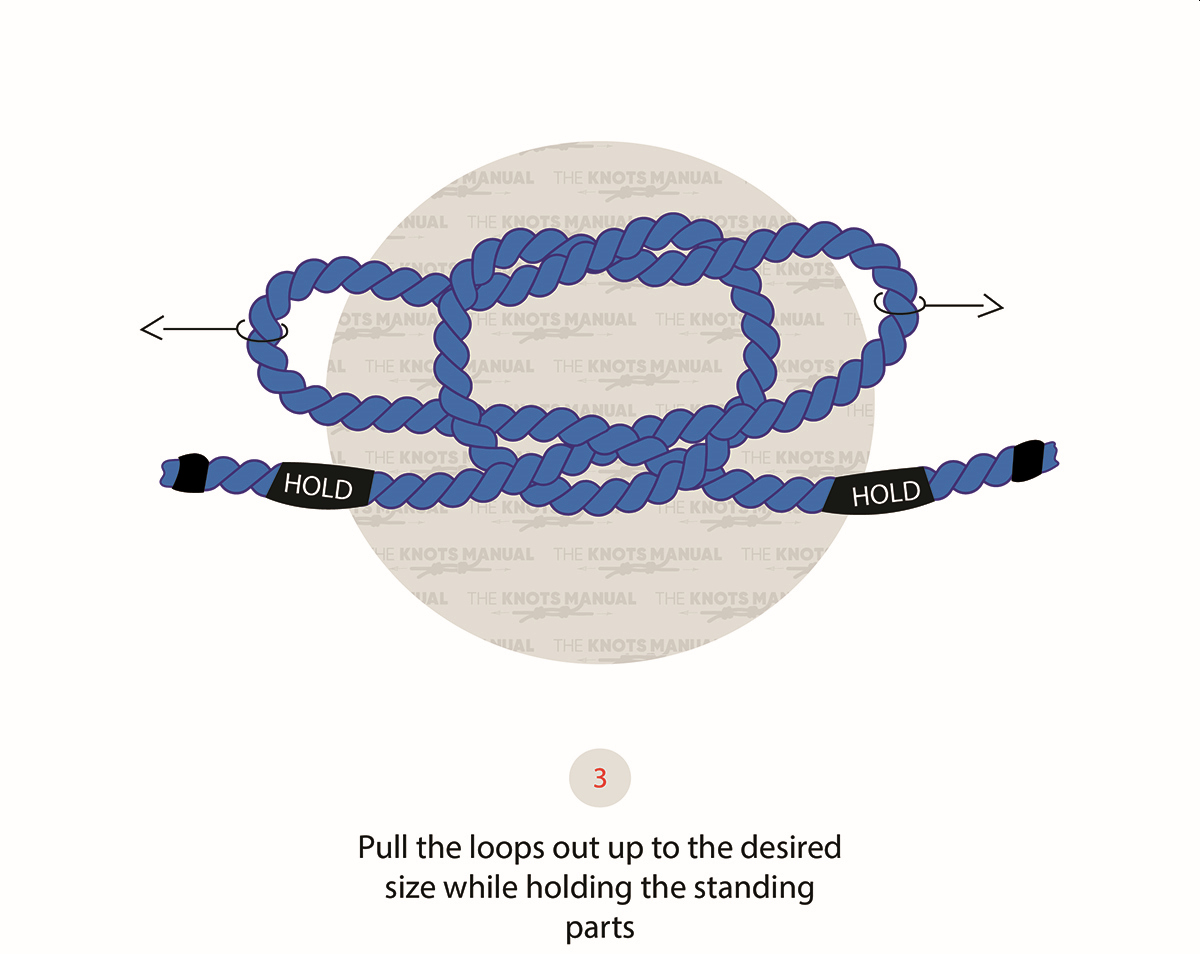
Holding the standing ends of the rope, pull the loops outward to the desired size.
Step 4:
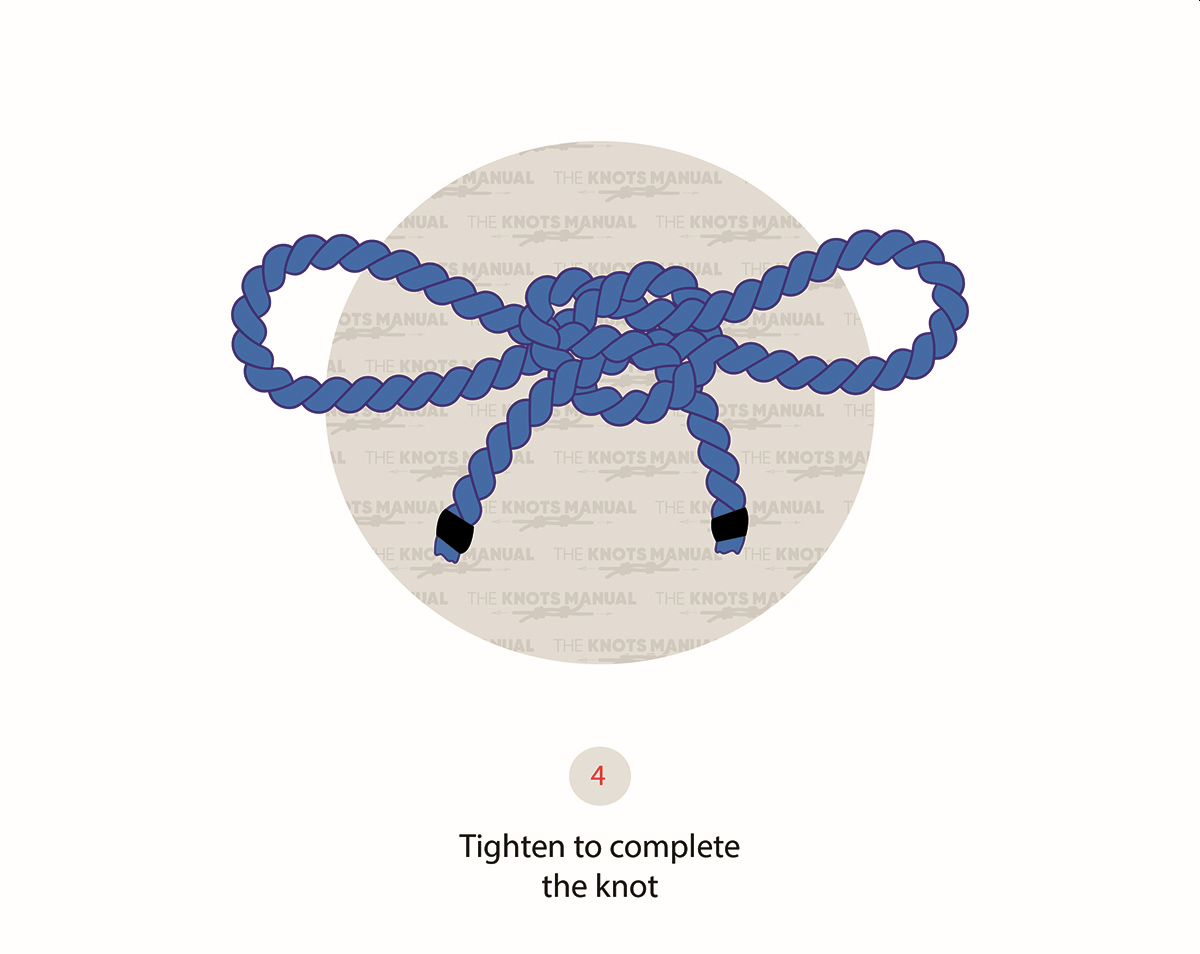
Pull the standing ends of the rope to tighten the knot.
What Are The Uses Of The Handcuff Knot?
Ironically, handcuff knots don’t work very well as handcuffs. Instead, they are more common with animal handling and search and rescue.
As Handcuffs
The original use of this knot is to make rope handcuffs. Yet, handcuff knots don’t hold a person’s wrists very well, and they’re relatively easy to break out of. They have not used much anymore with the invention of more secure handcuffs.
Search & Rescue
Today, a common use of the handcuff knot is in search and rescue. Yet, the knot is usually placed around a person’s thighs and is used like a chair.
The knot can lift a person into a sitting position for easy transport. The injured person holds onto the lifting end if conscious and able.
Conversely, the rope tail ties around the person’s torso if they are unconscious.
Alternatively, search and rescue may use the handcuff knot around a person’s wrists or ankles. Such use is generally avoided because it’s likely to harm the person needing rescue. Still, there are some situations where they are unavoidable for saving someone’s life.
For example, someone stuck in a below-grade hole or crevice may have no other way of getting out. In these cases, the rescuers put the loops of the handcuff knot around the victim’s wrists or ankles and lifts them. They will likely suffer injury to their wrists or ankles, but at least they will be alive.
Restraining Animals
Handcuff knots are also helpful for restraining animals, like cows and horses. The loops go around their legs and prevent them from moving.
Cowboys and ranchers tie the knots onto their legs in the evening so they can’t wander far away overnight. Doing so prevents the handlers from having to walk far to retrieve their animals. Such a practice is where the name “hobble knot” comes from.
The knot can also help someone drag a dead animal when necessary. For example, handcuff knots are common among hunters.
Role Play
Many people use handcuff knots for roleplay. They can immobilize a person somewhat, but not entirely. They are more gentle than real handcuffs or even plastic ones.
The handcuff knot is one of the most basic knots for role play.
A rope handcuff sounds rough, but it doesn’t have to be. Soft cotton ropes are the best option for this activity as they are gentle on the skin.
On Boats
Sailors and other boaters sometimes use the handcuff knot. The knot effectively ties oars and other items to the boat’s railings.
Knots Similar To The Handcuff Knot
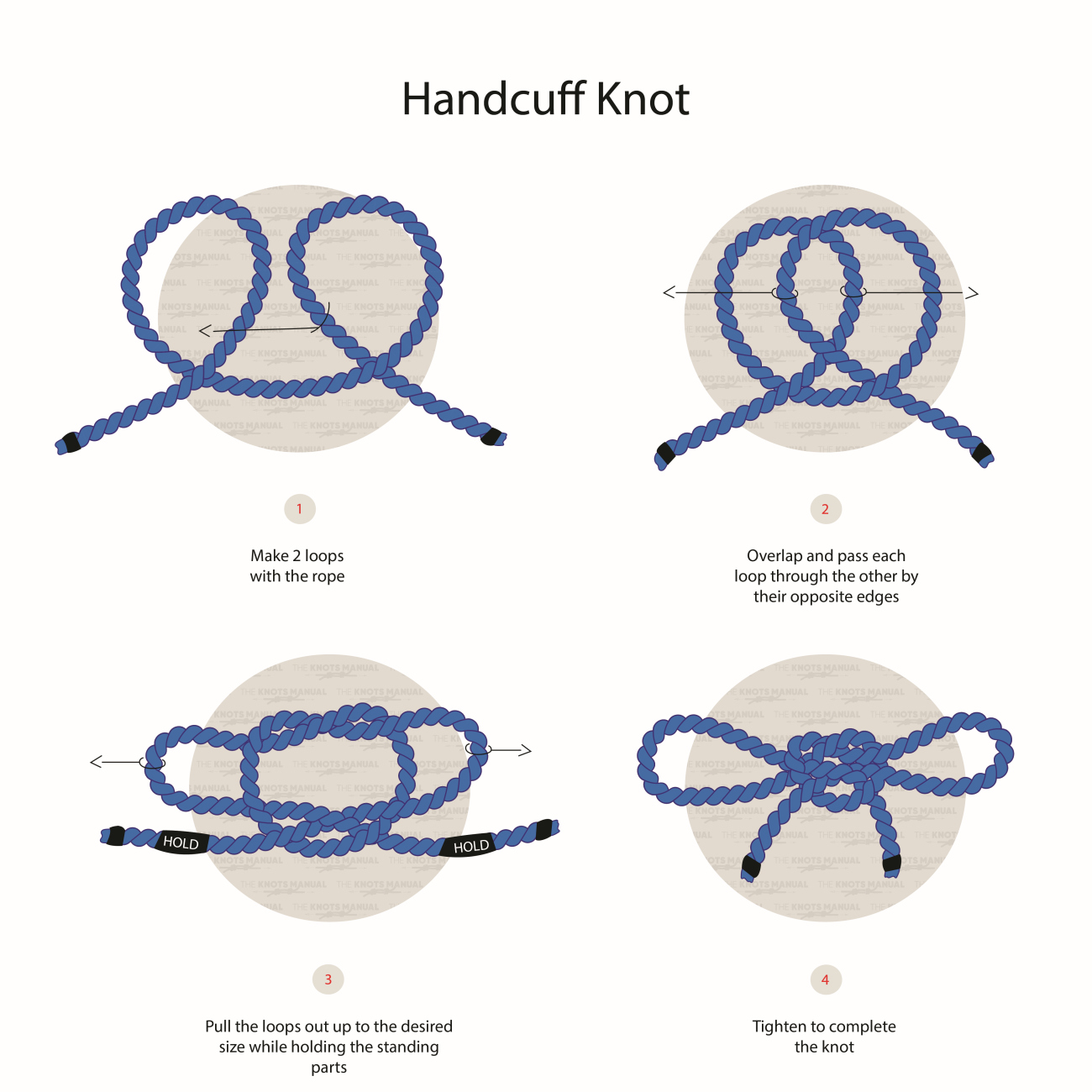
Prusik Knot: These knots are friction hitches. They attach a loop of cording around a rope. They are most common in climbing, mountaineering, and ziplining. They can also be used as handcuffs, though they are more ineffective than the handcuff knot.
Honda Knot: These knots are most often used as lassos. They form a loop that is thrown over an item and pulled to tighten.
FAQs
What Other Knots Are Commonly Used With Animals?
Cowboys and ranchers sometimes use the handcuff knot on horses and cattle. It prevents them from wandering far away in the night.
Here are some other knots used with animals:
- Double Bowline Knot (Tom Fool’s Knot) — Like the handcuff knot, these also secure an animal’s legs
- Quick-Release Knot — Effective lead ropes for horses who spook easily. Owners can release the knot quickly with a simple tug to prevent injury.
- Bowline — These knots are safe for tying around an animal’s neck
- Bowline on the Bight — Safe for tying around an animal’s neck or legs
- Half Hitch — Often used for restraining surgery patients in veterinary medicine
- Tail Tie — Useful for holding the tail out of the way during veterinary procedures
- Temporary Rope Halter — Useful for horses when a traditional halter isn’t available
- Fisherman’s Knot — Great for creating secure, difficult-to-untie leashes for dogs
Which Knots Are Used In Search & Rescue In Place Of The Handcuff Knot?
Search and rescue teams tend to avoid the handcuff knot unless it’s absolutely necessary.
Here are the knots they prefer to use instead:
- Alpine Butterfly Knot — A secure loop forms at the center of the rope
- Artilleryman’s Loop Knot — Another loop that forms at the center of the rope
- Autoblock Knot — These friction knots are useful for rappelling
- Bowline Knot — These knots form a secure loop
- Double Fisherman’s Knot — securely ties two ropes
- Figure-8 Knot — The securest way to form a loop at the end of a rope
- Fireman’s Coil — A coil of rope with a quick-release knot
- Munter Hitch — A belay knot for climbing
- Prusik Hitch — Useful for securing an adjustable loop to another rope
